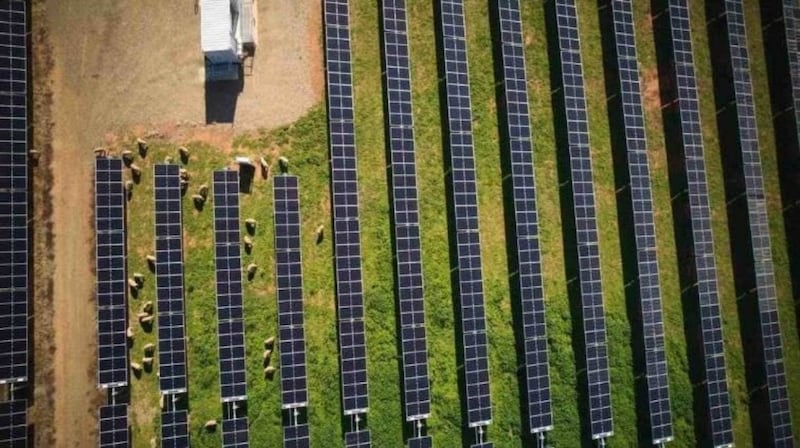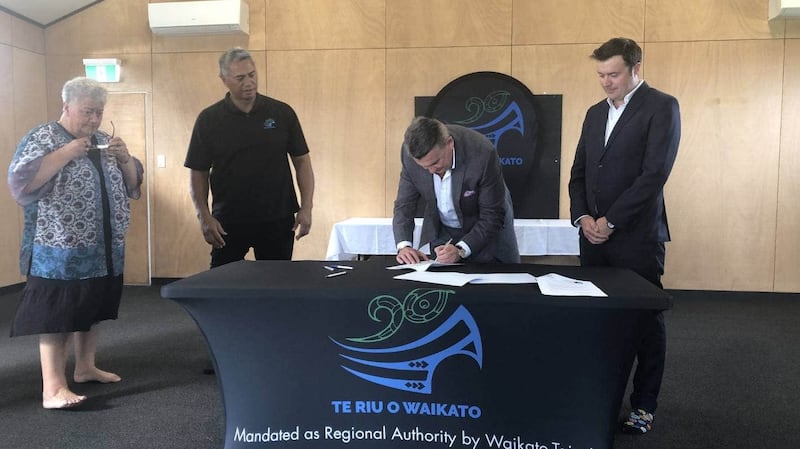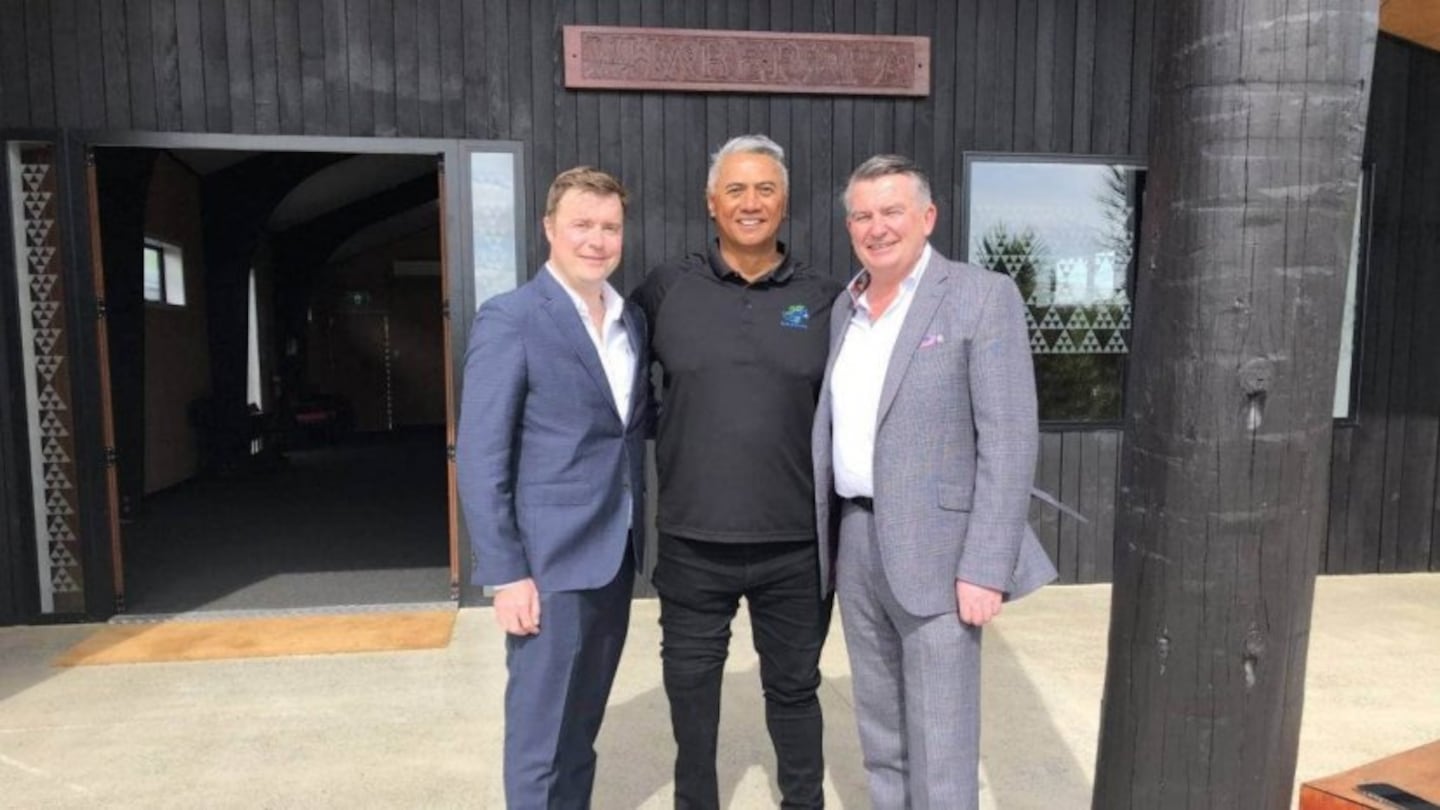Group behind mega Waikato solar farm project sign agreement with iwi. Pictured from L-R Colm Killeen, Tawera Nikau and Ian Lawrie. Photo / Stuff
A mega solar farm development set for Waikato has turned another leaf with an agreement signed between the international developer and manawhenua.
The fast tracked multi-million dollar solar farm will operate on two sites covering a total of 660 hectares in north Waikato’s Rangiriri and Waerenga areas.
The new sites come after objections from neighbours on the original one in Waiterimu Valley and marks another step in a major government shift towards solar energy.
The Kawenata (Memorandum of Understanding) between Te Riu o Waikato (a cluster of 15 north Waikato marae) and international solar developer, Island Green Power, signalled the start of a long-term agreement.
Te Riu o Waikato chair, Tawera Nikau, said at the signing that the project would mark a long-term relationship with the developers while looking after the taiao (environment).
“Part of that agreement is to look at furthering that relationship and the opportunity for economic development for our marae and whānau,” Nikau said.
“Their values were very similar to us as Māori...having understanding for the whenua and the environmental outcomes.”
The solar farm will generate over 300 megawatts, powering around 70,000 homes nation-wide.
Island Green Power approached the marae collective around 18 months ago, seeking to install the solar farms.
It comes as they say the shift towards renewable energy continues to grow, and thermal regeneration becomes “non-economically viable”.
Originally a 380ha solar project had been pitched for a location down stream in Waiterimu Valley.
The location was later swapped out for the two new sites after criticism from residents and members of regional council about the environmental impact of the farm on the area.
“That was the general consensus, that they do not want the solar farm in the Waiterimu Valley” Nikau said at the time.

Initially the British-based company Island Green Power proposed to build a large-scale solar farm in North Waikato's Waiterimu Valley. Photo / Supplied
“We are fully supportive of those farms because they’re not going to have as much impact on our environment.”
Andrew Cumberpatch, one of the planning consultants from New Zealand based group, Boffa Miskell said the power will be fed into the national grid via sub-stations on site.
“They’re big projects,” Cumberpatch said.
“There’s been a lot of work done with Transpower around meeting their requirements and how that all fits together.”
Island Green Power CEO Ian Lawrie and director Colm Killeen travelled from Ireland for the signing at Matahuru Marae in Waikato.
After installing nine projects in Australia, Lawrie said it was a natural next step to cross the ditch.
“There hadn’t really been any large-scale solar in New Zealand (previously) so we saw that the opportunity was there, so we came over...that was about three years to four ago,” Lawrie said.
Island Green Power had three New Zealand projects looking to deliver “clean green energy” for the next 40-50 years, this was while doing “little to no damage to the environment”.
The first turning of the soil for the Waikato project was expected to start in around 12 months with an estimated completion date in two years.

Representatives from Te Riu o Waikato and Island Green Power signing the Kawenata at Matahuru marae in Waikato. Photo / Stuff
Working with Māori was key to “making a sustainable project, truly sustainable”, Killeen said.
“The MOU will provide benefits to the Māori community for jobs and financial contributions that will assist in its over-all progress and development.”
The signing of the kawenata comes as the Government is planning to make it easier for developers to get resource consents for renewable energy projects.
Energy and Resources Minister Dr Megan Woods said the proposal look to better enable small and community-scale renewable electricity projects.
“These smaller renewable electricity projects, including iwi-run developments, have an important role to play in improving our security of electricity supply and local resilience,” Minister Woods said.
“These projects can often be disproportionately disadvantaged by consenting processes. We want to cut red tape and help achieve these aspirations.”


